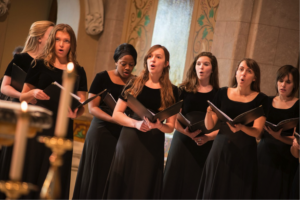Question: How do you mike musicians in a house of worship? (Part 1, Introduction)
Answer: Wow, as we think about how to answer this question, we wonder if this should be a blog entry, a magazine article or even a how-to book! There is just so much to consider and so many options. Also, if you ask ten front-of-house engineers or church sound techs you may get twelve different answers. As we begin this seven-part series, we will attempt to provide as much information as possible to help you get the absolute best sound from your band. In this introduction we will try to help you wrap your mind around some of the important things to consider before you hit the committee up for funds to purchase microphones.

Consideration 1: What instruments do you need to mike? This may seem quite obvious, but there are several things to think about. Will you have the same instruments on stage every week or could/do they change every week? Can you leave the mics set up all the time or will you have to set up all or some of them each week? Will you have possible bleed-over between instruments?
Consideration 2: How many inputs do you have on the console? This is a huge consideration. If you are lucky enough to have enough inputs to mike everything under the sun, then great! Many houses of worship don’t have that luxury and may have to compromise. For example, instead of miking every single drum you may be forced to use a festival miking technique (see sour previous post about miking drums at a festival). You may also need to use mic splitters or submixers to get the job done.
Consideration 3: How large is the room and how are the acoustics? In a small room you may be able to get away with fewer mics than you would in a large auditorium. Also, rooms with feedback issues may necessitate the use of less sensitive mics or microphones with tighter pickup angles.
Consideration 4: Why are you miking the instruments? Again, this may seem like a “Duh!” question, but miking for sound reinforcement may be completely different than miking for a recording.
Consideration 5: What is your budget? We don’t mean to be harsh here, but you can’t have “caviar” sound with a “trail mix” budget, and this is something every sound tech has to drill into the minds of their budget committee. We don’t know how many horror stories we’ve heard about a budget committee member advising that their nephew works at the local discount electronics store and can get them a great deal on microphones. Still, there are options for low budgets and there are sound techs who achieve good sound making do with what they have. In this series we will give you some options for top-of-the line options as well as lower budget options.
Over the next several weeks we will talk about miking choirs, praise bands, drums, piano, organ, guitars, and strings. Just for good measure, we will even throw in using In-Ear Monitor (IEM) systems.
If you have additional questions or would like a recommendation for an Audio-Technica microphone, feel free to contact the Audio-Technica Audio Solutions Department. We are always happy to help.